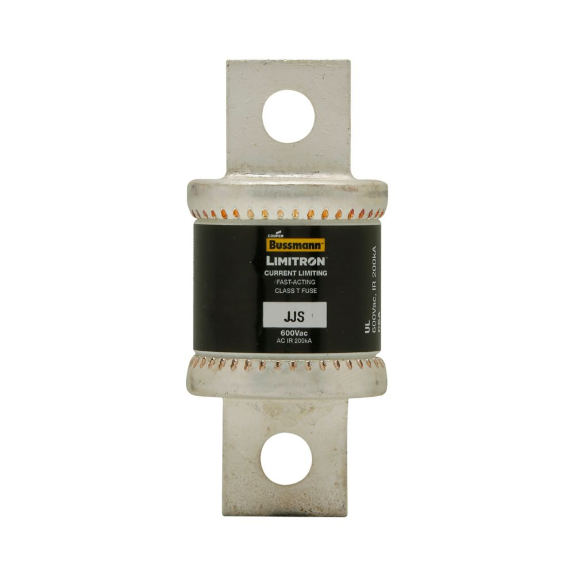Bussmann JJS-400 Class-T fuse is ideal for safeguarding electrical circuits and equipment from excessive current levels. Its Class-T designation signifies its fast-acting nature, providing quick response to short-circuit and overload conditions and preventing potential damage & downtime. It is used in industrial machinery, power distribution panels, renewable energy systems and data centres.
Working Mechanism:
- When the current passing through the fuse exceeds its rated value due to an overload or short circuit, the fuse starts to respond.
- The high current causes the fuse element inside to heat up rapidly.
- As the temperature of the fuse element rises, it reaches a critical point where the element melts or breaks, creating an open circuit.
- This interruption in the circuit disconnects the faulty or overloaded section from the power source.
- The interruption prevents excessive current from flowing, protecting connected equipment and preventing damage or hazards.
- After the fuse element breaks, the fuse needs to be replaced to restore the circuit's functionality, making maintenance straightforward.
Features:
- This Class T, fast-acting fuse provides reliable protection against short-circuit & overload conditions in electrical circuits.
- It has a holder-based mounting design for easy installation.
- This industrial power fuse features a cartridge blade style, protection against overloads and short circuits in high-power industrial applications.
- It has an interrupt rating of 200kAIC.
- This fast blow fuse features a knife blade termination style for secure connections.
Frequently Asked Questions:
Q. What does Class-T mean in the fuse's name?
A. Class-T refers to the specific type of fuse, indicating its fast-acting and time-delay characteristics, suitable for protecting high-current circuits.
Q. How do I prevent this JJS-400 fuse from electrical hazards and short circuits?
A.
- Ensure that the fuse's current rating matches the circuit to prevent overloading and hazards.
- Match the voltage rating of the fuse to the circuit to avoid electrical breakdown.
- Regularly inspect the fuse for damage, corrosion or wear and replace as needed.
- Install the fuse securely in its holder to prevent arcing or overheating.
- Choose an appropriate environment with proper temperature and humidity conditions.
- Select the correct fuse type (fast-acting or time-delay) based on equipment needs.
- Implement additional protection mechanisms like circuit breakers for short circuit prevention.
Q. What are the factors to consider while choosing the right fuse for my application?
A.
- Current and voltage rating
- Interrupt rating
- Time-current characteristics
- Application type
- Operating environment
- Physical size and mounting
Q. What is the current rating of this fuse?
A. The fuse has a current rating of 400 A. Customers searching for a fuse with higher current ratings can opt for Bussmann JJS-800 Fusethat has an amperage rating of 800A.
 Change Country
Change Country

 In Stock : 198 Units
In Stock : 198 Units
